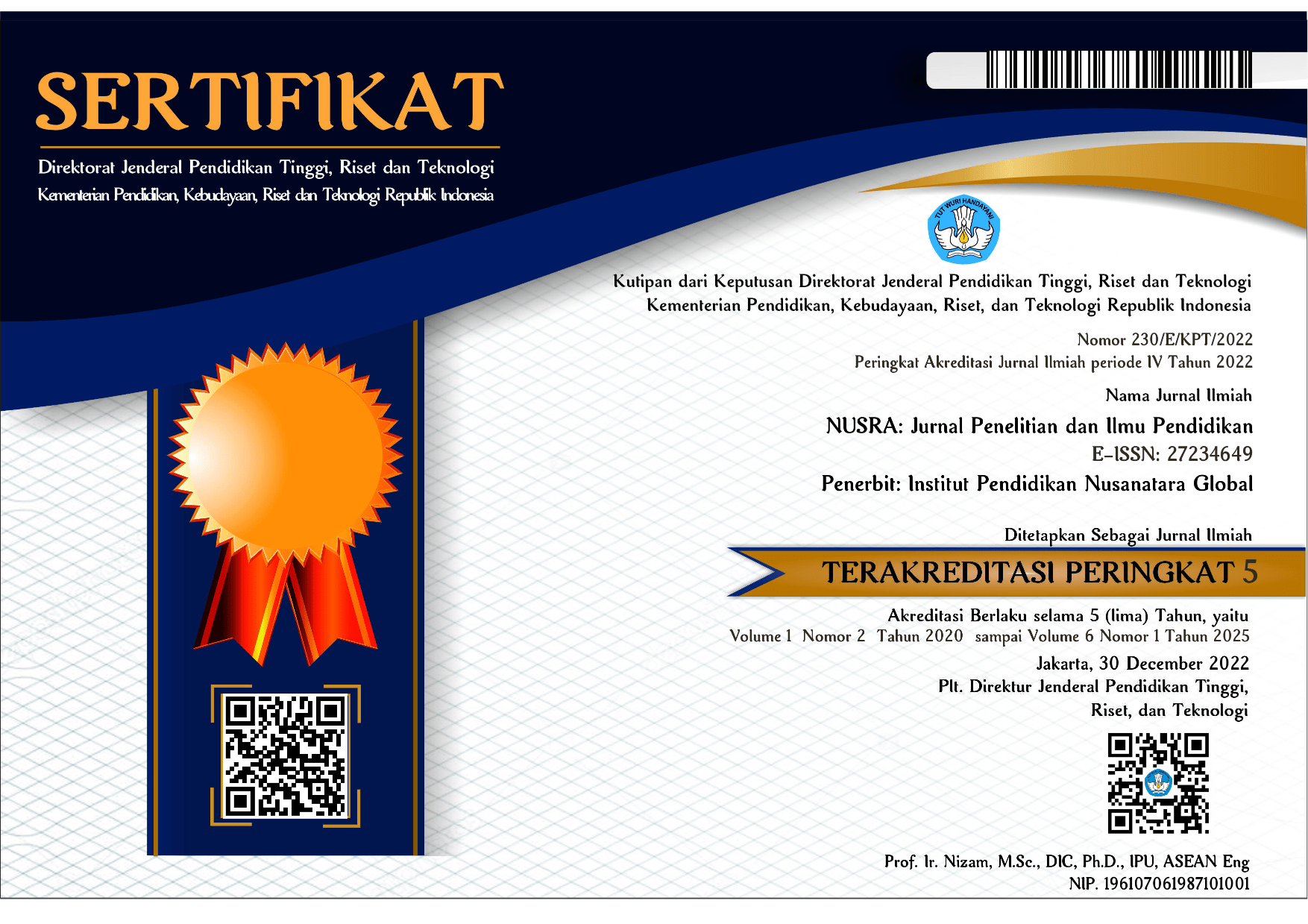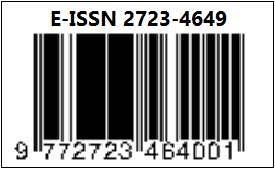Intervensi Pendidikan Kesehatan Seksual Berbasis Sekolah Terhadap Pencegahan IMS/HIV: Literatur Reviu
DOI:
https://doi.org/10.55681/nusra.v5i3.3276Keywords:
Education, Sexual Health, Adolescents, STI/HIVAbstract
Sexual education programs based on a curriculum and implemented among youth groups in schools, clinics, or community settings are a promising type of intervention to reduce risky sexual behaviors among adolescents. This study aims to explore the effectiveness of school-based sexual health education interventions for preventing sexually transmitted infections (STIs)/HIV. The research is a literature review sourced from international journal articles accessed through online databases such as Proquest, Science Direct, Springer Link, and Pubmed. Keywords used in the search included sexual health education, sexually transmitted infections, and adolescents. A total of 601 articles were retrieved from the search and were then screened based on inclusion and exclusion criteria. Articles that met the inclusion criteria were experimental studies published from 2005 to 2023, written in English, and available in full text. Articles that did not meet the criteria were eliminated after a thorough screening of titles, abstracts, and full texts. Seven articles met the criteria. The literature review results indicate that school-based sexual health education can improve knowledge, self-efficacy, attitudes, and behaviors related to the prevention of sexually transmitted infections and HIV, as well as help reduce stigma and discrimination against people living with HIV. Thus, it can be concluded that school-based sexual health education programs can be implemented as they have a significant positive impact on STI and HIV prevention behaviors.
Downloads
References
Ajuwon, A. J. and Brieger, W. R. (2007) ‘Evaluation of a school-based reproductive health education program in rural South Western, Nigeria.’, African journal of reproductive health, 11(2), pp. 47–59. doi: 10.2307/25549715.
Alfaro, A. C. (2019) ‘Adolescence and Risk of Sexually Transmitted Infections’, Journal of AIDS Clinical Research & STDs. doi: http://dx.doi.org/10.24966/ACRS-7370/100024.
Burnett, S. M. et al. (2011) ‘Evaluation of an intervention to increase human immunodeficiency virus testing among youth in Manzini, Swaziland: A randomized control trial’, Journal of Adolescent Health, 48(5), pp. 507–513. doi: 10.1016/j.jadohealth.2010.08.015.
Dehne, K. L. and Riedner, G. (2005) ‘Sexually Transmitted Infections among adolescents. The need for adequate health services’. Available at: https://www.who.int/publications/i/item/9241562889.
Denison, J. A. et al. (2012) ‘Do peer educators make a difference? An evaluation of a youth-led HIV prevention model in Zambian Schools’, Health Education Research, 27(2), pp. 237–247. doi: 10.1093/her/cyr093.
James, S. et al. (2005) ‘The effects of a systematically developed photo-novella on knowledge, attitudes, communication and behavioural intentions with respect to sexually transmitted infections among secondary school learners in South Africa’, Health Promotion International, 20(2), pp. 157–165. doi: 10.1093/heapro/dah606.
Jemmott, J. B. 3rd et al. (2015) ‘HIV/STI risk-reduction intervention efficacy with South African adolescents over 54 months.’, Health psychology : official journal of the Division of Health Psychology, American Psychological Association, 34(6), pp. 610–621. doi: 10.1037/hea0000140.
Juyani, A. K. et al. (2022) ‘Educational interventions to improve women ’ s preventive behavior of sexually transmitted infections ( STIs ): study protocol for a randomized controlled trial’, Trials, pp. 1–11. doi: 10.1186/s13063-022-06663-5.
Kementerian Kesehatan RI (2020) Rencana Aksi Kegiatan Pencegahan Dan Pengendalian Penyakit Menular Langsung Tahun 2020-2024. Edited by Direktorat Jenderal Pencegahan dan Pengendalian Penyakit. Jakarta: Direktorat Jenderal Pencegahan dan Pengendalian Penyakit Menular Langsung.
Kirby, D. B., Laris, B. A. and Rolleri, L. A. (2007) ‘Sex and HIV Education Programs: Their Impact on Sexual Behaviors of Young People Throughout the World’, Journal of Adolescent Health, 40(3), pp. 206–217. doi: 10.1016/j.jadohealth.2006.11.143.
Latifi, A. et al. (2017) ‘Theory-based interventions in STIs/HIV Prevention: A systematic review of the literature in Iran’, Medical Journal of the Islamic Republic of Iran, 31(1), pp. 869–876. doi: 10.14196/mjiri.31.131.
Menna, T., Ali, A. and Worku, A. (2015) ‘Effects of peer education intervention on HIV/AIDS related sexual behaviors of secondary school students in Addis Ababa, Ethiopia: A quasi-experimental study’, Reproductive Health, 12(1), pp. 1–8. doi: 10.1186/s12978-015-0077-9.
Shamagonam James, Priscilla Reddy, Robert A.C. Ruiter, Ann McCauley, and B. van den B. (2006) ‘Sentiment Index ’:, AIDS Education and Prevention, 18(4), pp. 281–294.
UNICEF (2019) ‘HIV prevention education and comprehensive sexuality education’.
UNICEF (2022) Adolescent HIV prevention. Available at: https://data.unicef.org/topic/hivaids/adolescents-young-people/ (Accessed: 14 April 2023).
Viegas, E. O. et al. (2015) ‘Incidence of HIV and the Prevalence of HIV , Hepatitis B and Syphilis among Youths in Maputo , Mozambique : A Cohort Study’, pp. 1–15. doi: 10.1371/journal.pone.0121452.
World Health Organization (2019) Global HIV Programme. Available at: https://www.who.int/teams/global-hiv-hepatitis-and-stis-programmes/hiv/treatment/treatment-and-care-in-children-and-adolescents (Accessed: 17 April 2023).
World Health Organization (2022) Hepatitis B. Available at: https://www.who.int/news-room/fact-sheets/detail/hepatitis-b (Accessed: 17 April 2023).
Downloads
Published
How to Cite
Issue
Section
License
Copyright (c) 2024 Husnul Khatimah, Erlin Puspita, Isroni Astuti, Dedes Fitria

This work is licensed under a Creative Commons Attribution-ShareAlike 4.0 International License.














